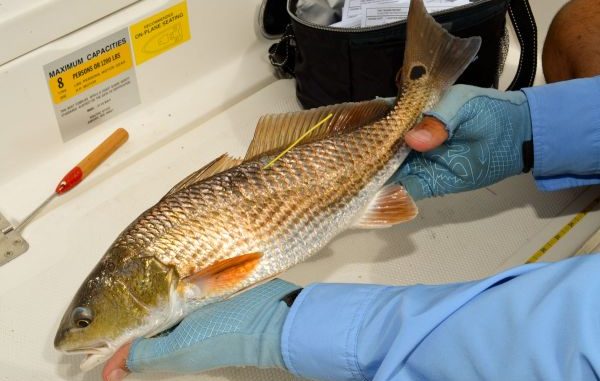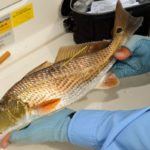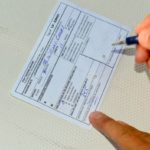
Louisiana’s Cooperative Marine Fish Tagging Program has been a coast-wide effort since 2008. And Bob Bateman is one of 350 active volunteers who tag and release some or all of their catch.
“I first read about it in the Louisiana Sportsman and looked into it,” Bateman said. “I liked the conservation aspect and studying how fish move and grow. It’s kind of a game. I like to see how many are recaptured and where.
“I took someone out a month ago who caught a redfish I had tagged over 400 days before. It was within 50 yards of where it was originally tagged. A woman in our party caught another one the next day sight-fishing.”
Louisiana Department of Wildlife and Fisheries’ Heather David, who coordinates the program, said the program started in the early 1980s with an initiative from the Louisiana Coastal Conservation Association. CCA member Maumus Claverie was a key player in kicking off the effort.
In 2004, LDWF received a grant from the U.S. Fish and Wildlife Service and conducted a pilot tagging program limited to the Barataria system.
Four years later, the program went statewide.
In the past year, David said, 350 fishermen were active taggers. “Active” is a key word.
“We are seeking serious, dedicated volunteers,” David said. “The program sounds great to a lot of people, but it is work. The data we get from the program is only as good as the anglers producing it. It needs to be accurate.”
She said the data is useful in determining fish population structure, movement patterns and habitat preferences. The data also is added to tagging data collected by LDWF biologists, which together are used to determine mortality rates and growth rates.
“It is rewarding and exciting to give back to the resource,” the enthusiastic biologist said. “Taggers will receive a report on how long the recaptured fish they tagged was out there and how much it has grown.
“A big benefit is that the program opens lines of communication between anglers and LDWF.”
Last year, more than 10,000 fish were tagged. Since the program began, the number of tagged fish has topped 150,000. Without the help of volunteer taggers, tagging that many fish would have been very expensive for the department.
David also stressed that not only taggers are important, but also fishermen who catch a tagged fish and report it.
“We want fishermen to call in recaptures,” she said. “It doesn’t have to be on the water, and can be done when the fish is being cleaned.”
The main information needed is the tag number, the length of the fish and either GPS coordinates or a detailed description of the location of the capture. If a tagged fish is re-released, the tag should be left intact and the catch called in to the number on the tag: 800-567-2182.
Currently, the tagging program is limited to speckled trout, redfish, red snapper and yellowfin tuna. Individuals interested in joining the program and becoming a “citizen scientist” may call Heather David at 419-304-8184.


